
Illusory Truth Effect
Principal Category: Cognitive Biases
Author:
• Tim McGuinness, Ph.D. – Anthropologist, Scientist, Polymath, Director of the Society of Citizens Against Relationship Scams Inc.
Abstract
Online scammers exploit the illusory truth effect to enhance the credibility of their deceptive narratives in romance and crypto investment scams. By repeatedly exposing victims to false information, scammers create a sense of familiarity and truthfulness around their schemes. To protect against these tactics, individuals should engage in critical thinking, seek diverse information sources, understand cognitive biases, fact-check claims, maintain skepticism towards overly consistent narratives, and seek support from trusted sources. These strategies help victims recognize and overcome the illusory truth effect, making them less susceptible to scams.

Illusory Truth Effect – Cognitive Bias
The Illusory Truth Effect: How Repeated Exposure Shapes Our Beliefs
The illusory truth effect is a cognitive bias where individuals are more likely to believe a statement is true if they have been exposed to it multiple times, regardless of its actual veracity. This phenomenon was first identified by psychologists Hasher, Goldstein, and Toppino in 1977, and it highlights the powerful influence of repetition on our perception of truth.
A Cognitive Bias
The illusory truth effect is classified as a cognitive bias or heuristic. A cognitive bias is a systematic pattern of deviation from norm or rationality in judgment, often occurring as a result of the brain’s information-processing rules. These biases are often unconscious and can lead to perceptual distortion, inaccurate judgment, or illogical interpretation.
The Mechanism Behind the Illusory Truth Effect
The illusory truth effect operates on a subconscious level, tapping into our brain’s tendency to process familiar information more efficiently. When we encounter a statement repeatedly, our brain recognizes it as “old” information, which it associates with being true. This is because, in everyday life, we tend to encounter true statements more frequently than false ones. Over time, this association between familiarity and truthfulness becomes ingrained in our cognitive processes.
Neurologically, the illusory truth effect is linked to the brain’s default mode network, which is active when we are not focused on the external environment and is involved in internal mentation, including memory retrieval and self-reflection. When we hear a repeated statement, this network is engaged, and the brain’s fluency in processing the information is misinterpreted as a sign of its truthfulness.
The Role of Memory and Cognition
Memory plays a crucial role in the illusory truth effect. Our brains are designed to prioritize efficiency, and recognizing a statement as familiar requires less cognitive effort than evaluating its truth. This cognitive ease can lead us to accept the statement as true without critically examining its content. Additionally, the more emotionally charged or personally relevant a statement is, the more susceptible we are to the illusory truth effect, as these factors can further enhance the feeling of familiarity and fluency.
The effect is also influenced by our tendency to confuse the ease of processing a statement with its accuracy. This confusion arises because, in many cases, true statements are indeed easier to process due to their alignment with our existing knowledge and experiences. However, this heuristic can backfire when applied to false statements that are repeated often enough to achieve the same level of processing fluency.
Real-World Implications
The illusory truth effect has significant implications in various aspects of life, from politics and advertising to education and social media. In politics, for example, repeated slogans and talking points can gain traction simply because of their frequency, regardless of their factual basis. Advertising exploits this effect by using repetitive messaging to create a sense of familiarity and, consequently, trust in a brand or product.
In the digital age, the illusory truth effect is amplified by the echo chambers and filter bubbles created by social media algorithms. These algorithms often expose users to content that aligns with their existing beliefs, reinforcing the illusion of truth through repeated exposure. This can lead to the spread of misinformation and the entrenchment of false beliefs, as individuals are more likely to accept statements that resonate with their worldview, even if they are not factually accurate.
Illusory Truth Effect and Scams
Online scammers exploit the illusory truth effect to enhance the credibility and allure of their relationship and crypto investment schemes. By repeatedly exposing victims to false information, scammers create a sense of familiarity and truthfulness around their deceptive narratives. This tactic is particularly effective in romance scams, where scammers build trust over extended periods, and in crypto investment scams, where repeated exposure to fake investment opportunities can make them seem legitimate.
Romance Scams and the Illusory Truth Effect
In romance scams, scammers often use the illusory truth effect to make their fake identities and stories seem more credible. They repeatedly share consistent but false information about their background, interests, and experiences, which can make their fabricated personas feel genuine to the victim. For instance, a scammer might claim to be working overseas in construction or the military, using this distance as an excuse to avoid in-person meetings 1. By maintaining this consistent narrative over time, the victim begins to accept it as truth, making it easier for the scammer to manipulate them into sending money or personal information.
The use of advanced AI and deepfake technology further amplifies the illusory truth effect. Scammers can create realistic profiles and even deepfake videos or voice messages that align with their false identities. This technological sophistication makes their stories more convincing, as victims are exposed to a multitude of consistent, albeit fake, details that reinforce the illusion of authenticity 2,3.
Crypto Investment Scams and the Illusory Truth Effect
Crypto investment scams also leverage the illusory truth effect to make fake investment opportunities seem more appealing and trustworthy. Scammers build trust over weeks or months before persuading victims to invest in fake crypto platforms. They repeatedly share “success stories” and fake trading results, creating a sense of urgency and FOMO (fear of missing out) around their investment schemes 4,5. By exposing victims to these false narratives repeatedly, scammers can make their fraudulent investment opportunities feel more legitimate, even when they are not.
Moreover, scammers often use social media and mainstream media to promote their fake crypto schemes, exploiting the illusory truth effect on a larger scale. They may share posts or articles that seemingly endorse their investment opportunities, creating a false sense of validation and credibility. This tactic is particularly effective in the age of AI, where scammers can use generative AI to create convincing content that mimics legitimate sources 6,7.
Combating the Illusory Truth Effect in Scams
To protect against these tactics, it’s crucial for individuals to be aware of the illusory truth effect and to critically evaluate the information they receive, especially from unknown sources.
Here are some steps to help recognize and overcome the illusory truth effect in scams:
- Critical Thinking: Question the source and consistency of the information provided. If something seems too good to be true, it probably is. Look for independent verification of claims made by potential scammers.
- Diverse Information Sources: Seek out multiple, reliable sources of information. Relying on a single source, especially one controlled by the scammer, can reinforce the illusory truth effect.
- Awareness of Cognitive Biases: Educate yourself about common cognitive biases, including the illusory truth effect. Being aware of these biases can help you recognize when you might be falling for a scam.
- Fact-Checking: Always fact-check statements, especially those that are repeated frequently. Use reputable fact-checking websites and resources to verify the accuracy of information.
- Skepticism Towards Consistency: Be wary of narratives that are too consistent or perfect. Real life is messy, and genuine stories often have inconsistencies and flaws.
- Seek Support: Talk to trusted friends, family, or professionals about potential scams. An outside perspective can help identify red flags that you might miss.
Overcoming the Illusory Truth Effect
To safeguard yourself from the deceptive tactics of scammers, it’s essential to understand and counteract the illusory truth effect. This cognitive bias can make even the most far-fetched stories seem credible if they are repeated often enough. By critically evaluating the information you receive and employing various strategies, you can better protect yourself from falling victim to scams. Below, we explore each tactic in detail to help you recognize and overcome the illusory truth effect.
Critical Thinking: Questioning the Source and Consistency
Critical thinking is your first line of defense against scams. When you encounter information, especially from unknown sources, it’s crucial to question its origin and the consistency of the narrative. Scammers often create elaborate stories that seem plausible at first glance, but they may crumble under scrutiny. Ask yourself: “Who is providing this information, and what do they stand to gain?” If something seems too good to be true, it probably is. For example, in a romance scam, a potential partner who claims to be a successful businessman with a perfect life and a heartbreaking backstory might be too consistent to be genuine.
To counter this, look for independent verification of the claims made by potential scammers. This could involve checking public records, using reverse image searches, or consulting with experts in the field. For instance, if someone claims to be a high-ranking military officer, you can verify their identity and rank through official military databases or contact the relevant authorities. By seeking out this additional layer of verification, you can ensure that the information you’re receiving is accurate and not part of a carefully crafted deception.
Diverse Information Sources: Broadening Your Perspective
Relying on a single source of information, especially one controlled by the scammer, can reinforce the illusory truth effect. To mitigate this risk, seek out multiple, reliable sources of information. Diversifying your information sources can provide a more balanced and accurate picture of the situation. For example, in a crypto investment scam, a scammer might share “success stories” and fake trading results on a single platform or website. By comparing this information with data from reputable financial news outlets, regulatory bodies, and independent crypto analysts, you can gain a more comprehensive understanding and identify any inconsistencies or red flags.
Additionally, engaging with communities and forums dedicated to discussing potential scams can provide valuable insights. These communities often consist of individuals who have firsthand experience with scams and can offer warnings and advice based on their encounters. By actively participating in these discussions, you can learn about common tactics used by scammers and recognize the signs of a potential scam more easily.
Awareness of Cognitive Biases: Understanding Your Mind
Educating yourself about common cognitive biases, including the illusory truth effect, is a powerful way to recognize when you might be falling for a scam. Cognitive biases are systematic patterns of deviation from norm or rationality in judgment, and they can significantly influence how we perceive and interpret information. By becoming aware of these biases, you can develop a more critical and discerning mindset.
For example, the confirmation bias, which is the tendency to favor information that confirms our pre-existing beliefs, can make us more susceptible to scams that align with our desires or expectations. In a romance scam, if you are looking for a soulmate, you might be more likely to overlook red flags and accept the scammer’s narrative as true. Similarly, the availability heuristic, where we judge the likelihood of events based on how easily examples come to mind, can make us more vulnerable to scams that are frequently discussed in the media. By understanding these biases, you can actively work to counteract their effects and make more informed decisions.
Fact-Checking: Verifying the Accuracy of Information
Always fact-check statements, especially those that are repeated frequently. Scammers often rely on the illusory truth effect by repeating false information until it seems credible. To counteract this, use reputable fact-checking websites and resources to verify the accuracy of the information you receive. For instance, if you encounter a claim about a new crypto investment opportunity, you can check fact-checking websites like Snopes or FactCheck.org for any existing analyses or warnings about the scheme.
Moreover, you can use online tools and databases to cross-reference information. For example, if a scammer provides you with a fake identity, you can use people search engines and social media to gather more information about the individual. If the details don’t match up or if the person has no online presence, it could be a sign that the identity is fabricated. By taking the time to fact-check, you can separate fact from fiction and make more informed decisions about the legitimacy of the information you’re receiving.
Skepticism Towards Consistency: Embracing the Messiness of Reality
Be wary of narratives that are too consistent or perfect. Real life is messy, and genuine stories often have inconsistencies and flaws. Scammers, on the other hand, often create overly polished and consistent narratives to make their stories seem more believable. For example, in a romance scam, a scammer might provide a perfectly crafted backstory that includes every detail you could want to know, from their favorite childhood memory to their current job and future plans. This level of consistency can be a red flag, as genuine people and stories are rarely so perfectly aligned with our expectations.
To counteract this, embrace a healthy level of skepticism and look for the imperfections in the stories you hear. Ask probing questions and pay attention to any inconsistencies or gaps in the narrative. For instance, if a scammer claims to be a successful businessman, ask specific questions about their work, such as the names of their clients or the details of their latest projects. Genuine individuals will be able to provide more nuanced and less rehearsed responses, while scammers might struggle to maintain their consistent facade.
Seek Support: Leveraging an Outside Perspective
Talking to trusted friends, family, or professionals about potential scams can provide an outside perspective that helps identify red flags you might miss. An outside viewpoint can offer a fresh set of eyes and a different set of experiences to draw upon, which can be invaluable in recognizing the signs of a scam. For example, if you’re considering an investment opportunity, discussing it with a financial advisor or someone with experience in the field can help you evaluate the risks and benefits more objectively.
Additionally, seeking support from communities of scam survivors can provide emotional and practical assistance. These communities often consist of individuals who have gone through similar experiences and can offer empathy, advice, and strategies for coping with the aftermath of a scam. By connecting with others who have been through the same ordeal, you can gain a sense of solidarity and shared understanding that can be incredibly healing and empowering.
Protecting yourself from scams involves a combination of critical thinking, diverse information gathering, awareness of cognitive biases, rigorous fact-checking, healthy skepticism, and seeking support. By employing these strategies, you can better recognize and overcome the illusory truth effect, making yourself less vulnerable to the deceptive tactics of scammers.
By understanding how scammers use the illusory truth effect and taking proactive steps to mitigate its influence, individuals can better protect themselves from falling victim to these deceptive tactics.
Conclusion
The illusory truth effect is a powerful cognitive bias that illustrates how repetition can influence our perception of truth. By understanding the mechanisms behind this effect and recognizing its implications, we can take steps to mitigate its influence and foster a more critical and informed approach to information. In an era where misinformation can spread rapidly, being aware of the illusory truth effect is essential for navigating the complex landscape of information and ensuring that our beliefs are grounded in reality rather than mere familiarity.

Glossary
- Availability heuristic — This term describes a mental shortcut where recent or vivid examples feel more common than they are. Headlines and dramatic stories dominate memory and skew judgment. You can pause and ask for base rates from neutral sources before deciding.
- Belief perseverance — This pattern keeps a belief in place even after strong counter-evidence appears. The mind protects prior conclusions to preserve identity and certainty. You can write the exact claim, list disconfirming facts, and update the claim in plain language.
- Cognitive ease — This state occurs when information feels simple to process and therefore seems more likely to be true. Repetition, clear fonts, and short slogans increase ease and lower scrutiny. You can mark easy messages for later checking rather than instant belief.
- Cognitive load — This condition arises when the brain juggles too much information at once, reducing accuracy. Scammers raise the cognitive load with long stories, timers, and multitasking. You can slow the pace, take notes, and decide only after a break.
- Confirmation bias — This bias favors data that agrees with what a person already believes. Conflicting facts get ignored or reinterpreted. You can actively seek one credible source that argues the opposite view before acting.
- Consistency cascade — This tactic strings many matching details to make a false story feel solid. The match creates comfort that replaces proof. You can verify one hard detail from an independent record and see whether the rest holds.
- Credibility cueing — This practice uses symbols of authority to borrow trust, such as uniforms, logos, and titles. The signal pushes the brain toward acceptance. You can confirm authority through official channels rather than visual cues.
- Debiasing routine — This routine sets small steps that counter known thinking errors. It includes a pause, a second source, and a written reason for any transfer or commitment. You can keep the routine on paper and follow it under pressure.
- Deepfake familiarity drift — This effect occurs when repeated synthetic audio or video starts to feel authentic. Familiar faces and voices lower doubt even when the content is false. You can look for provenance and request a real-time verification call.
- Echo chamber — This environment filters out disagreement and repeats the same view. Familiarity then replaces accuracy. You can add high-quality sources with different perspectives to your regular reading.
- Evidence ladder — This tool ranks proof from weakest to strongest, such as screenshots, public records, and audited statements. It helps separate claims from verifiable facts. You can refuse requests until evidence reaches a set rung.
- Familiarity heuristic — This shortcut treats known statements as safer than new ones. Repeated lines gain unearned weight. You can mark repeated claims with a question and verify them outside the conversation.
- Fact-checking triad — This method uses three steps: identify the exact claim, consult two reliable sources, and record the outcome. The record prevents a slide back to the prior belief. You can run the triad before sending money or personal data.
- Fluency misattribution — This error assigns truth to how smoothly a statement reads. Clear phrasing feels accurate even when the content is false. You can judge by sourced evidence, not by style.
- Foot-in-the-door repetition — This technique starts with small repeated asks to win compliance before bigger demands. Each yes makes the next yes easier. You can set a hard limit on what you will not do, regardless of past small favors.
- Framing effect — This bias shifts decisions based on how information is presented. Gains and losses framed differently change choices without changing facts. You can restate the problem in neutral terms before deciding.
- Frequency illusion (Baader-Meinhof) — This illusion makes a newly noticed idea seem to appear everywhere. The spike feels like proof of importance. You can log actual counts over a few days to reset perception.
- Heuristic override — This skill replaces a snap judgment with a slower check. It treats urgency as a cue to pause, not to rush. You can practice with a simple script: “Pause, verify, then decide.”
- Identity protective cognition — This pattern defends group identity by rejecting disconfirming facts. Belief becomes a badge of belonging. You can ask whether the claim would still feel true if no one you admire endorsed it.
- Illusory correlation — This error links two events that only coincidentally occur together. The link survives even after the data shows no connection. You can request trend data over time before accepting a claimed relationship.
- Illusory truth effect — This bias increases belief in a statement through repetition alone. Familiar lines feel truer regardless of evidence. You can treat repeated claims as higher-risk and verify them with primary records.
- Inoculation message — This message warns about a specific manipulation and previews the tactic. Early warning builds resistance when the tactic appears later. You can share concise inoculations with family before a scam wave.
- Information hygiene — This habit manages sources, saves proofs, and separates facts from opinions. Clean inputs reduce confusion and panic. You can keep a shortlist of trusted outlets and avoid forward chains.
- Misinformation laundering — This tactic moves a false claim through layers of reposts until it looks legitimate. Each hop adds borrowed credibility. You can trace the first appearance of a claim before trusting it.
- Motivated reasoning — This bias squeezes facts to fit a desired outcome, such as profit or romance. Desire leads, and evidence follows. You can write the desired outcome and then test whether the facts would persuade a stranger.
- Narrative coherence trap — This trap values a neat story over a messy truth. Smooth arcs feel safer than partial answers. You can accept gaps and ask for documents rather than a better story.
- Prebunking — This strategy teaches people the trick before they encounter it. Knowing the move reduces its power on first contact. You can prebunk loved ones about common scam scripts.
- Repetition attack — This attack repeats slogans, screenshots, and testimonials across channels. Volume stands in for validation. You can ask for one verifiable document instead of many repeated claims.
- Reputational piggybacking — This scheme connects a claim to a well-known brand, charity, or figure to gain trust. The tie may be invented or trivial. You can confirm endorsements directly with the named organization.
- Source amnesia — This effect remembers a claim but forgets where it came from. The claim later feels ownerless and therefore neutral. You can attach sources to saved notes so memory keeps context.
- Sticky slogan effect — This effect increases recall for short, rhythmic phrases. Stickiness can mask a lack of proof. You can translate slogans into plain claims and check each one.
- Stop-signal question — This question halts momentum: “What new verified fact justifies action right now?” If no new fact exists, action pauses. You can use the question whenever urgency appears.
- Truth-default bias — This bias assumes people are honest unless proven otherwise. It speeds daily life but increases risk with strangers online. You can switch off the default for money and romance contexts.
- Verification pause — This pause inserts time between the message and the decision. It lowers arousal and restores judgment. You can make the pause a rule for any request involving money, secrecy, or speed.
- Wear-out check — This check asks whether a message still looks credible after a day and a second reading. Many false claims fade with time. You can schedule the check before any transfer.
- Witness test — This test imagines explaining the decision to a trusted friend or officer with documents on the table. If the explanation feels thin, the risk is high. You can run the test before sending funds or data.

Welcome to the SCARS INSTITUTE Journal of Scam Psychology
A Journal of Applied Scam, Fraud, and Cybercrime Psychology – and Allied Sciences
A dedicated site for psychology, victimology, criminology, applied sociology and anthropology, and allied sciences, published by the SCARS INSTITUTE™ – Society of Citizens Against Relationship Scams Inc.
TABLE OF CONTENTS
A Question of Trust
At the SCARS Institute, we invite you to do your own research on the topics we speak about and publish, Our team investigates the subject being discussed, especially when it comes to understanding the scam victims-survivors experience. You can do Google searches but in many cases, you will have to wade through scientific papers and studies. However, remember that biases and perspectives matter and influence the outcome. Regardless, we encourage you to explore these topics as thoroughly as you can for your own awareness.
Please Leave A Comment
Recent Comments
On Other Articles
on Psychological Trauma & Stress And Its Effects On Sufferer’s Genetics – 2024: “Very interesting article. I have wondered sometimes if the way I respond to trauma was due to the trauma and…” Aug 14, 11:15
on Psychological Denial – A Maladaptive Coping Mechanism In Scam Victims – 2024: “I can see from this article how denial can become a coping mechanism for individuals after a scam. I myself…” Jul 15, 19:51
on Reductive Thinking – A Maladaptive Coping Mechanism – An Enemy Of Scam Victims Recovery – 2024: “Very good article that explained the differences between reductive thinking and minimizing. I’m not sure but it seems that minimizing…” Jul 13, 20:14
on Self-Hate In Scam Victims And Its Impact From Psychological Trauma – 2024: “At one time in my life I felt self hate and I did at one point want to end my…” Jul 6, 15:23
on Victim Complex/Victim Mentality In Relationship Scam Victims 2023: “Thank you for another great article. I have known a few people with victim mentality in my life. Knowing them…” Jul 6, 13:35
A Note About Labeling!
We often use the term ‘scam victim’ in our articles, but this is a convenience to help those searching for information in search engines like Google. It is just a convenience and has no deeper meaning. If you have come through such an experience, YOU are a Survivor! It was not your fault. You are not alone! Axios!
Statement About Victim Blaming
Some of our articles discuss various aspects of victims. This is both about better understanding victims (the science of victimology) and their behaviors and psychology. This helps us to educate victims/survivors about why these crimes happened and to not blame themselves, better develop recovery programs, and to help victims avoid scams in the future. At times this may sound like blaming the victim, but it does not blame scam victims, we are simply explaining the hows and whys of the experience victims have.
These articles, about the Psychology of Scams or Victim Psychology – meaning that all humans have psychological or cognitive characteristics in common that can either be exploited or work against us – help us all to understand the unique challenges victims face before, during, and after scams, fraud, or cybercrimes. These sometimes talk about some of the vulnerabilities the scammers exploit. Victims rarely have control of them or are even aware of them, until something like a scam happens and then they can learn how their mind works and how to overcome these mechanisms.
Articles like these help victims and others understand these processes and how to help prevent them from being exploited again or to help them recover more easily by understanding their post-scam behaviors. Learn more about the Psychology of Scams at www.ScamPsychology.org
Psychology Disclaimer:
All articles about psychology, neurology, and the human brain on this website are for information & education only
The information provided in these articles is intended for educational and self-help purposes only and should not be construed as a substitute for professional therapy or counseling.
While any self-help techniques outlined herein may be beneficial for scam victims seeking to recover from their experience and move towards recovery, it is important to consult with a qualified mental health professional before initiating any course of action. Each individual’s experience and needs are unique, and what works for one person may not be suitable for another.
Additionally, any approach may not be appropriate for individuals with certain pre-existing mental health conditions or trauma histories. It is advisable to seek guidance from a licensed therapist or counselor who can provide personalized support, guidance, and treatment tailored to your specific needs.
If you are experiencing significant distress or emotional difficulties related to a scam or other traumatic event, please consult your doctor or mental health provider for appropriate care and support.
Also, please read our SCARS Institute Statement About Professional Care for Scam Victims – here
If you are in crisis, feeling desperate, or in despair please call 988 or your local crisis hotline.
SCARS Institute Resources:
- If you are a victim of scams go to www.ScamVictimsSupport.org for real knowledge and help
- Enroll in SCARS Scam Survivor’s School now at www.SCARSeducation.org
- To report criminals visit https://reporting.AgainstScams.org – we will NEVER give your data to money recovery companies like some do!
- Sign up for our free support & recovery help by https://support.AgainstScams.org
- Follow us and Find our podcasts, webinars, and helpful videos on YouTube: https://www.youtube.com/@RomancescamsNowcom
- SCARS Institute Songs for Victim-Survivors: https://www.youtube.com/playlist…
- See SCARS Institute Scam Victim Self-Help Books at https://shop.AgainstScams.org
- Learn about the Psychology of Scams at www.ScamPsychology.org
- Dig deeper into the reality of scams, fraud, and cybercrime at www.ScamsNOW.com and www.RomanceScamsNOW.com
- Scam Survivor’s Stories: www.ScamSurvivorStories.org
- For Scam Victim Advocates visit www.ScamVictimsAdvocates.org
- See more scammer photos on www.ScammerPhotos.com


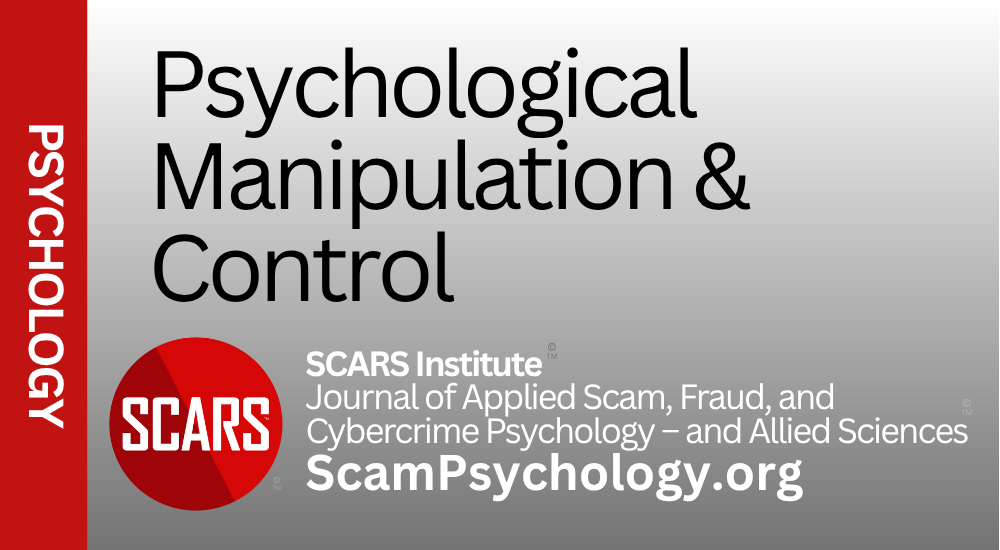
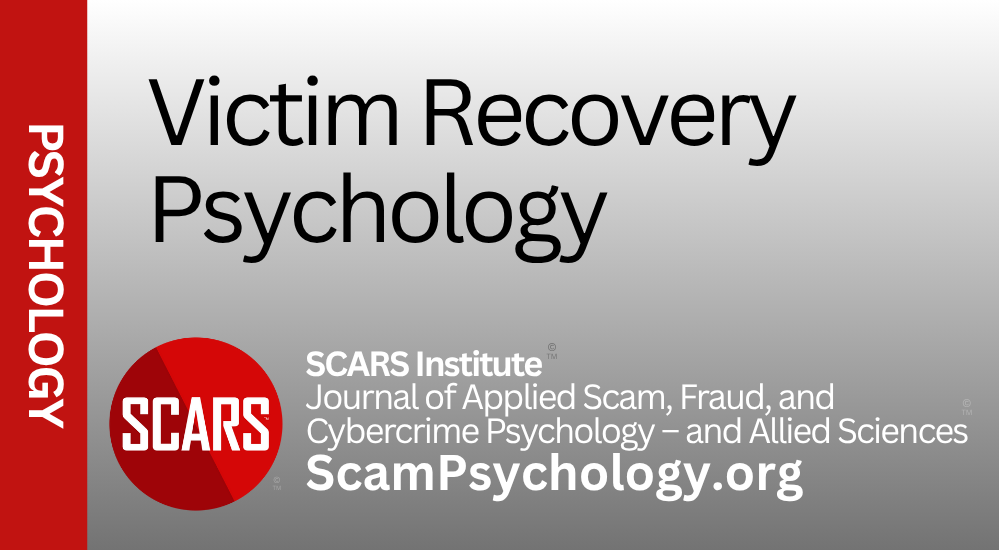
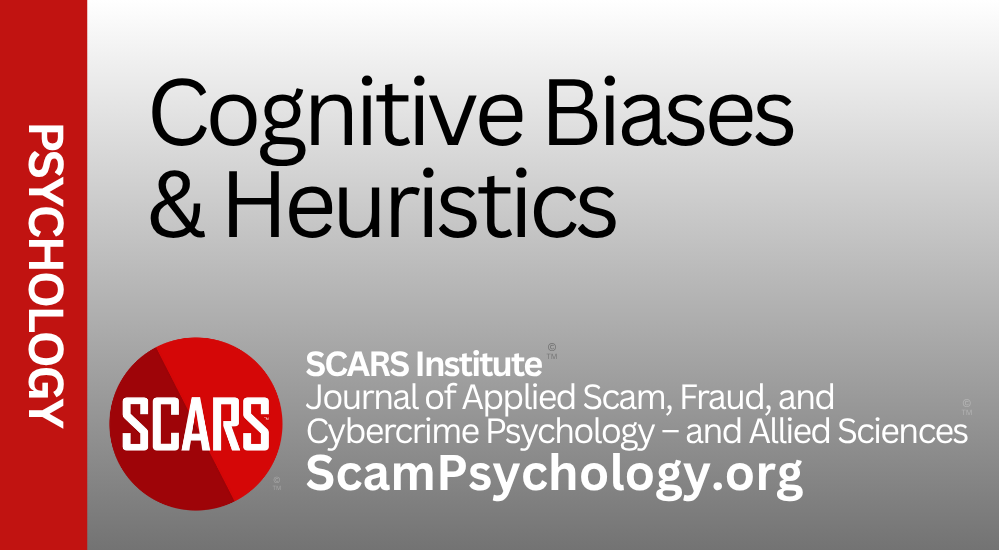
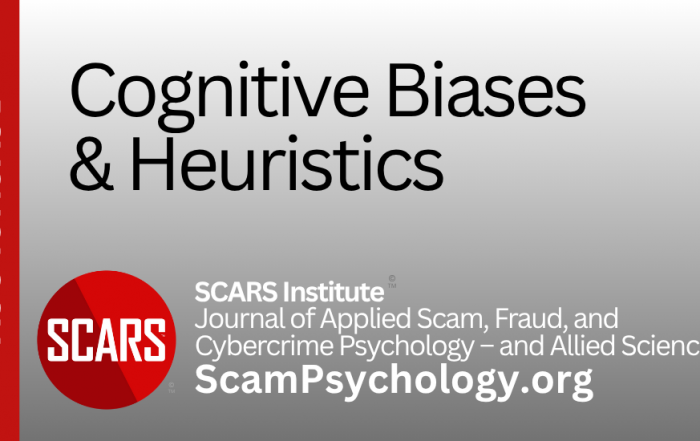

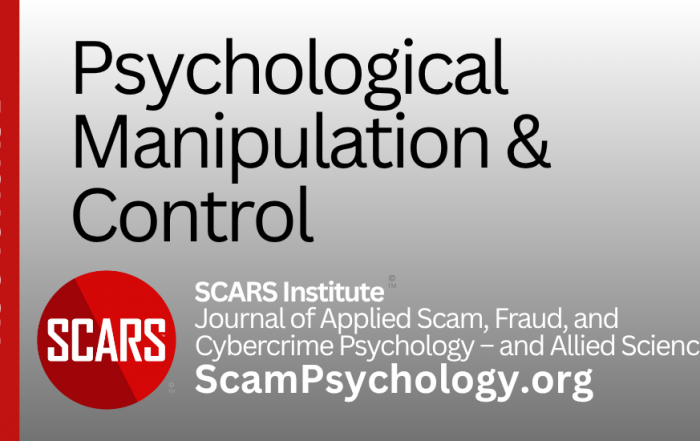


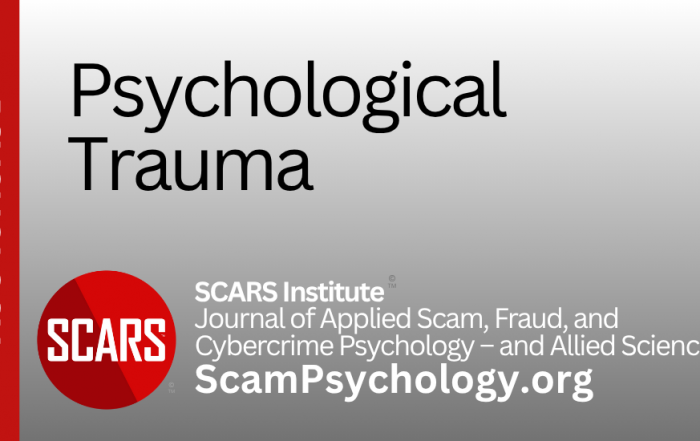

![niprc1.png1_-150×1501-11[1]](https://scampsychology.org/wp-content/uploads/2025/05/niprc1.png1_-150x1501-111.webp)